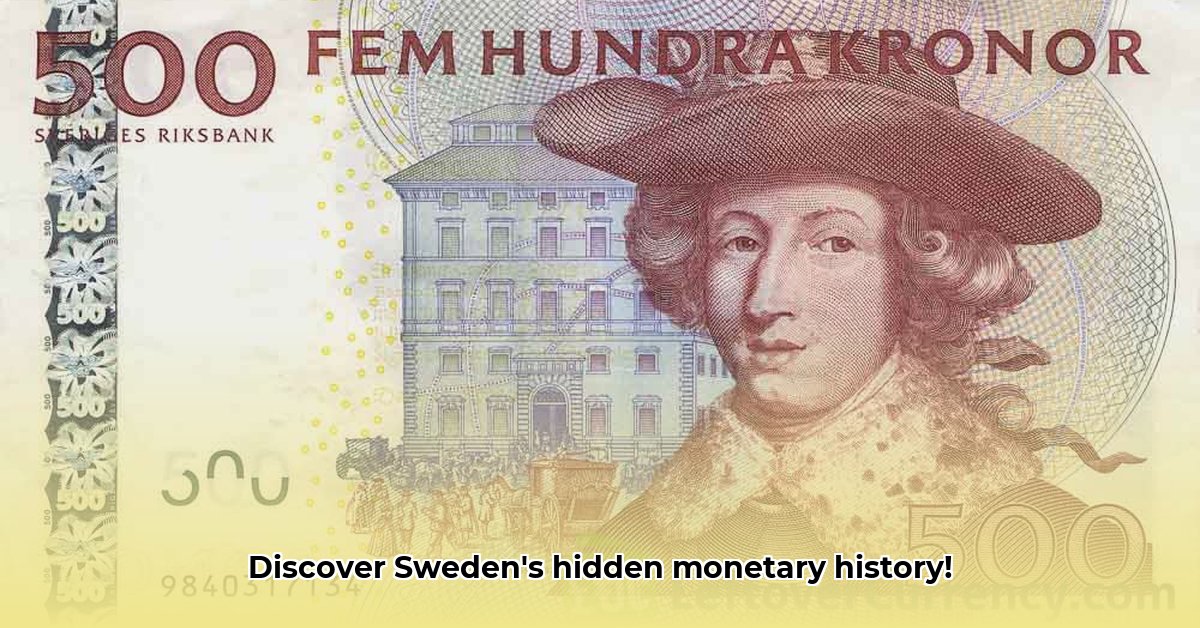
Ever been stumped by a crossword clue asking for an "old Swedish currency unit"? You might think of the öre, and you'd be partly right. But the story of Sweden's monetary history is far richer and more nuanced than a single answer suggests. This isn't just about dusty old coins; it's a captivating narrative woven through centuries of economic and political change, told through the coins and currency that shaped Sweden. For further research on historical currency values, see this example resource.
The Daler: A Silver Lining in Swedish History
For hundreds of years, the Swedish daler (pronounced dah'-ler) reigned supreme. Imagine bustling 17th-century marketplaces, the satisfying clink of silver dalers—a tangible representation of wealth and power—changing hands. These weren’t uniform; different sizes and values reflected Sweden's evolving economic landscape. Some were small and easily lost, while others were large and impressive, symbols of status and success.
But the daler's reign wasn't without its turbulence. Its value fluctuated dramatically, mirroring Sweden's economic fortunes and political climate. Was the value always consistent? Absolutely not! It ebbed and flowed, reflecting the rise and fall of the Swedish empire itself. Historians are still piecing together the complete picture, analyzing surviving records to understand the complexities of the daler's fluctuating worth. This economic rollercoaster offers a unique lens through which to view Sweden's past. How did the fluctuating value of the daler impact everyday life? Further research offers tantalizing clues.
The Krona: A New Reign Begins
The krona (pronounced kroh'-nah) gradually emerged, eventually replacing the daler. This wasn't an abrupt overthrow; rather, it was a gradual transition. For a time, both currencies circulated concurrently—imagine the confusion! This dual-currency system underlines the complexity of the shift. The krona eventually solidified its position as Sweden's official currency, but what gave it the edge? Historians continue to debate the factors behind its success and the daler's decline. This fascinating transition holds clues to broader economic and societal shifts in Sweden.
Beyond the Big Two: Other Notable Units
While the daler and krona dominate the narrative, other smaller units played supporting roles. Though less prominent, these lesser-known currencies provide valuable context and offer glimpses into specific periods and regions within Sweden.
| Unit | Brief Description | Period of Use (Approximate) |
|---|---|---|
| Öre | A smaller subunit; originally a fraction of the daler, later of the krona | Varied considerably |
| Skilling | Another tiny unit, often used alongside the öre | Varied considerably |
These smaller units highlight the multifaceted nature of currency in Sweden, illustrating how different units often worked in conjunction with each other.
Decoding the Past: Exchange Rates and Purchasing Power
Converting old Swedish currency to modern values presents a significant challenge. Inflation and economic shifts make direct comparisons incredibly complex. What could you buy with a 17th-century daler? This requires careful consideration of purchasing power parity (PPP)—a measure of relative purchasing power between different time periods. Researchers often estimate the value by comparing the cost of a "basket of goods" then and now. For example, if a loaf of bread cost one daler in 1650 and a comparable loaf costs 100 krona today, then we could make a crude estimation of their relative value. However, this is a massive simplification, ignoring the shifts in the goods themselves and overall economic changes
A Legacy Etched in Metal
The evolution of Swedish currency isn't just about coins and notes; it's a reflection of the nation's economic and political journey. From the gleaming silver dalers to the modern krona, each currency embodies a chapter in Sweden's rich history and serves as a tangible link to the past. The story of Sweden's old currency units is a fascinating blend of history, economics, and numismatics, offering a unique window into the past.